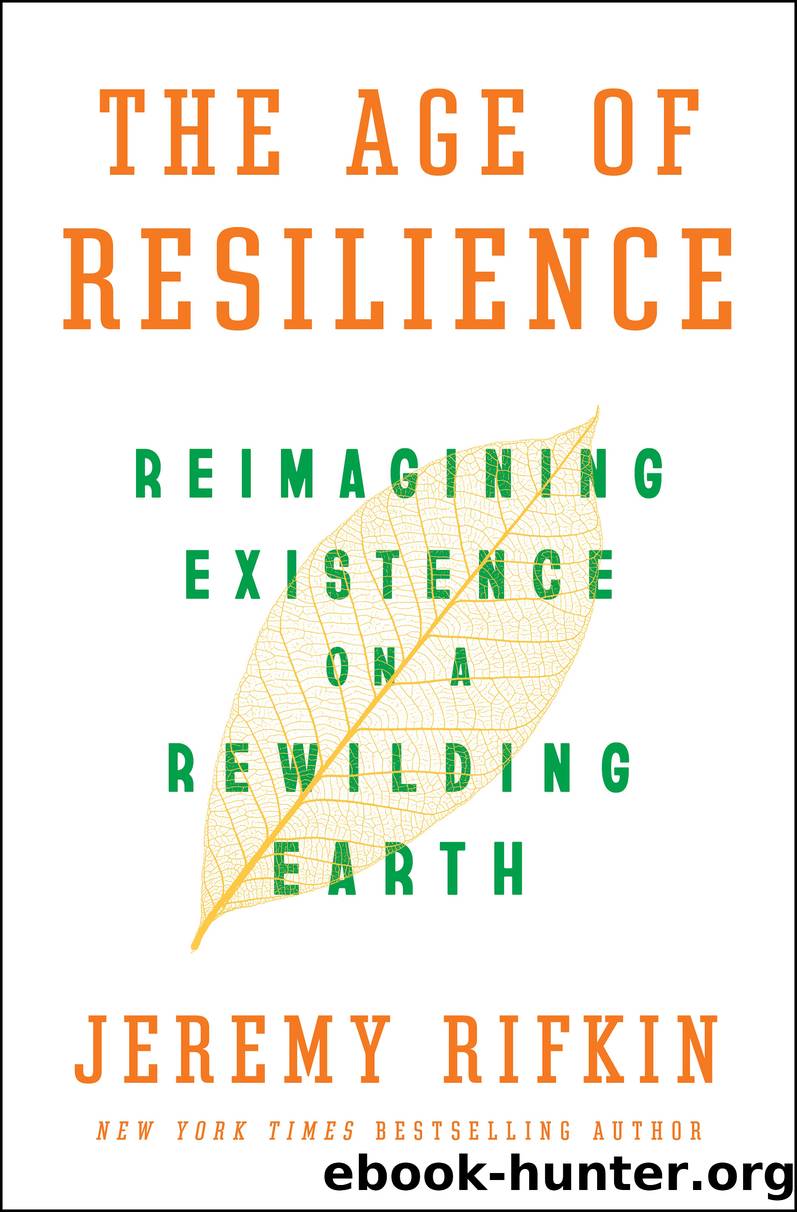The Age of Resilience by Jeremy Rifkin

Author:Jeremy Rifkin
Language: eng
Format: epub
Publisher: St. Martin's Publishing Group
A CASES approach to scientific inquiry falls short of the kind of predictability that science has hitherto sought. Any attempt to establish a boundary on a self-organizing system misses the underlying truth that all self-organizing systems are patterns among other patterns that spread out in time and space and across the earthâs operating spheres, impacting one another in subtle and profound ways that rarely can be foreseen. The most important lesson of applying CASES thinking is to partially let go of the obsession with âpredictionâ and settle for âanticipationâ and âadaptation.â
Even many of the findings on the future of climate change are generally after the fact. Scientists in the field admit that changes in the earthâs spheres and ecosystems brought on by global warming are difficult to forecast before the effects are seen. Thatâs because the positive feedback loops on a warming planet are so pervasive, with cascading effects rippling out in every direction, that forecasting becomes problematic.
For example, for decades climate scientists paid no attention to the permafrost that covers 24 percent of the entire northern hemisphere landmass until they noticed the effect that global warming was having on the melting of the ice.15 They realized that under the ice lay vast carbon depositsâthe remains of lush animal and plant life that flourished in the northern climes before the beginning of the last Ice Age. Even more troubling, they noticed that the melting of the ice was accelerating because the opaque white layer of the ice that had previously reflected the sunâs energy back into space upon melting was leaving behind large swaths of exposed black earth that was absorbing more of the heat from global warming emissions and hastening the melting processâagain, another positive feedback loop.
They began measuring the CO2 and methane emissions that were seeping up from under the ground and realized that the leakage was increasing at an exponential rate, threatening a dramatic increase in global warming emissions that might rival the CO2 emissions from industrial activity over the past two hundred years. Here was a new reality that had not previously been predictedâan unknown unknown. We finally began to grasp the difficulty of predicting the course of evolving self-organizing complex systems in a radically changing climate and how they might affect society.
The way forward, then, is to at least âpartiallyâ shift the focus of scientific inquiry from prediction to adaptation. There is still a significant role to play in making predictions, although that path is narrowing with the cascading rewilding of the earth in the throes of global warming. At the same time, the science of adaptation is ripe to play a role in redirecting societyâs response to climate change. After all, adaptation is the way every other species adjusts to the unpredictable changes in an ever-evolving world. Adaptivity is not a new concept in science. Itâs only that itâs getting a second life because of the increasing risks facing society.
Download
This site does not store any files on its server. We only index and link to content provided by other sites. Please contact the content providers to delete copyright contents if any and email us, we'll remove relevant links or contents immediately.
Harry Potter and the Goblet Of Fire by J.K. Rowling(3040)
Never by Ken Follett(2879)
Shadow of Night by Deborah Harkness(2718)
Ogilvy on Advertising by David Ogilvy(2682)
Zero to IPO: Over $1 Trillion of Actionable Advice from the World's Most Successful Entrepreneurs by Frederic Kerrest(2389)
The Man Who Died Twice by Richard Osman(2297)
Machine Learning at Scale with H2O by Gregory Keys | David Whiting(2287)
Book of Life by Deborah Harkness(2263)
How Proust Can Change Your Life by Alain De Botton(2261)
My Brilliant Friend by Elena Ferrante(2223)
0041152001443424520 .pdf by Unknown(2219)
The Tipping Point by Malcolm Gladwell(2204)
How to Pay Zero Taxes, 2018 by Jeff A. Schnepper(2098)
Will by Will Smith(2040)
Purple Hibiscus by Chimamanda Ngozi Adichie(1981)
Hooked: A Dark, Contemporary Romance (Never After Series) by Emily McIntire(1956)
Borders by unknow(1785)
Rationality by Steven Pinker(1764)
Daughter of Smoke and Bone by Laini Taylor(1742)
